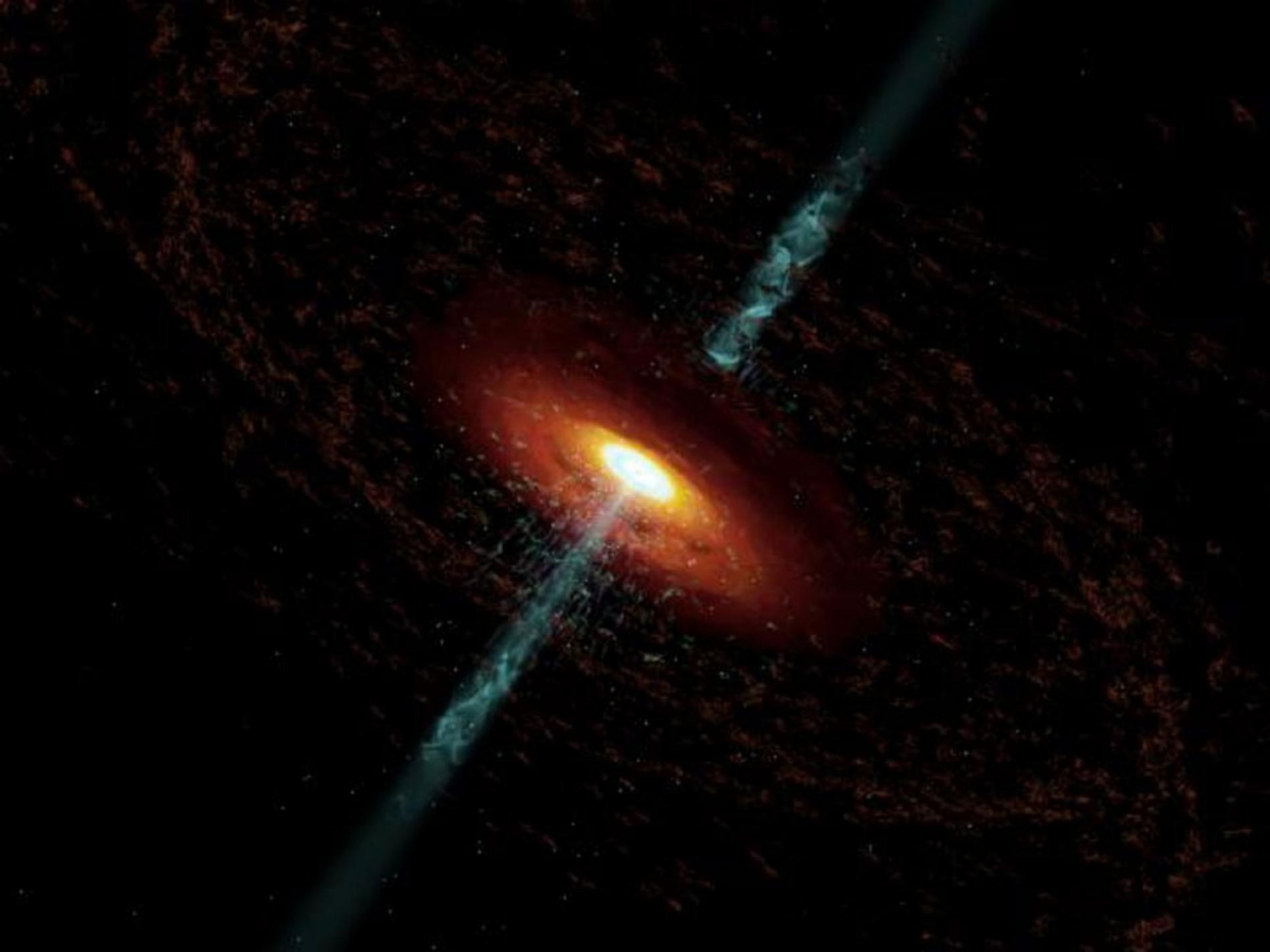The merger of two galaxies generates the juvenile version of a blazar, one of the most energetic objects known
The first unequivocal detection of a jet of material at very high speed emerging from a galaxy in collision with another has been obtained. The jet emerges from the galaxy's central supermassive black hole and is seen head-on, a precursor structure to the formation of a blazar
Blazars are the most powerful sources of continuous radiation in the universe. Like the rest of the active galaxies, they show a structure formed by a central supermassive black hole surrounded by a disk of matter that feeds it, but they are among the 10% of active galaxies that have a jet of matter that emerges from both poles at very high speed, and among the even smaller percentage of cases in which its orientation allows us to see the jet almost head-on. Now, a group of researchers has photographed a juvenile version of a blazar, a result that points to the jets being produced due to the merger between galaxies.
“Active galaxies with jets are generally large and old elliptical galaxies. And, according to the models, these are formed by the fusion of two or more minor galaxies, so it is assumed that these fusions are responsible for the activation of the jets -says Rubén García-Benito, a researcher at the Institute of Astrophysics of Andalusia (IAA-CSIC) involved in the study-. In fact, a collision is a very effective method of transporting large masses of gas towards the center of galaxies, which feeds the supermassive black hole and can cause the jet to emerge".

And the group of researchers has found, precisely and for the first time, an example of such a scenario: a couple of young spiral galaxies in the middle of a merging process, each showing a supermassive black hole in its nucleus. One of them (the most massive) has a very young jet, estimated to be less than fifteen thousand years old, whose existence can be attributed to the interaction between the galaxies, which began at least half a billion years ago.
"We see the jet head-on, so we have found the precursor of a blazar. In scientific terminology, these young spiral galaxies that host jets are called Seyfert 1 narrow-line gamma-ray emitting galaxies (g-NLSy1). As an analogy we can think that, if a blazar is an adult, a g-NLSy1 would be a child", says Enrique Pérez Jiménez, an IAA-CSIC researcher participating in the work.
Generally, the brightness of blazars is so intense that they hide the galaxy that hosts them, so studying their environment is difficult. However, the jet found in this less energetic galaxy g-NLSy1 has allowed us to study the gas or stars in the host galaxy, which is very valuable information for tracing the origin of the jets.
The team obtained the image using several of the world's largest ground-based telescopes, such as the Subaru optical infrared telescope (8.2 metres) located in Hawaii, the Gran Telescopio Canarias (10.4 metres) and the William Herschel Telescope (4.2 metres), both on La Palma, as well as with the Chandra X-ray Space Observatory (NASA).
"Both the phenomenon of collisions between galaxies and jets have been known for decades, and we have high quality images of them. This work shows that these two extraordinary events could be connected, and that galaxy mergers play a crucial role in the life cycle of a galaxy. Among all the known g-NLSy1s, some fifteen to date, more than 70% exhibit characteristics similar to those we expect in a galaxy collision, so our result also shows the enormous importance of studying these objects with the best possible tools", concludes Rubén García-Benito (IAA-CSIC).
Vaidehi S. Paliya, Enrique Pérez, Rubén García-Benito et al. TXS 2116−077: A Gamma-Ray Emitting Relativistic Jet Hosted in a Galaxy Merger, The Astrophysical Journal, April 2020 DOI: 10.3847/1538-4357/ab754f
Instituto de Astrofísica de Andalucía (IAA-CSIC)
Unidad de Divulgación y Comunicación
Silbia López de Lacalle - sll[arroba]iaa.es - 958230676
https://www.iaa.csic.es
https://divulgacion.iaa.csic.es

